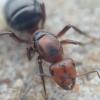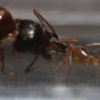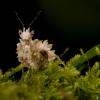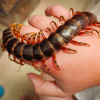I caught this queen on June 17, 2017. It was Father's Day, and my dad decided to take us hiking. Once we parked, I immediately ran over to the open grassy area behind the parking lot. I found this queen walking up a tree after about 30 seconds of searching. I carried her in her tube for the rest of the hike. As soon as I saw her, I knew she was Camponotus sp., but it took me about a month to ID her down to the species. The raeson for this is that Camponotus nearcticus comes in two color variations: solid black, or a black head & gaster an orange thorax and legs. Most of the photos I saw were of the solid black variation, so I had crossed that species off the list for a while.
This has always sort of been my problem colony. When I caught her, I noticed one of her front legs was missing everything below the tibial spur. The queen didn't lay any eggs for a little under a month. After that, she kept eating her brood. Then, in early July, I left for summer camp for 5 weeks. When I got back, She had 1 large larvae and 2-3 small larvae. She ended up eating the smaller larvae, but the big one eventually pupated. Unlike most Formicine ants, the pupae was naked. After another month, the worker FINALLY eclosed. By this point, the queens gaster was barely larger than her head. I immediately fed them a drop of honey, which she drank immediately. A week later, they had a small brood pile of ~6 small larvae. Then, everything just stopped. They stopped accepting any sort of food. The brood stopped developing. They barely moved. It stayed like this for 3-4 months. Then, on Christmas, I got a heating cable. Once they started receiving heat, all the problems disappeared. The worker started foraging up and down the tube. I immediately fed them a drop of honey and part of a pre-killed mealworm, which they accepted for the first time in months. No more than a day later, the brood started to develop. Still pretty slowly, but surely. Moral of the story: heating your ants is REALLY important.
By this Point, their test tube had gotten quite moldy, but I hadn't been able to move them due to their lethargy. I taped a new, clean tube to their old one, and placed the new on by the heating cable, and they moved within half an hour. That was a few days ago. That brings us to today.
Here are some photos I took of them in their new test tube:
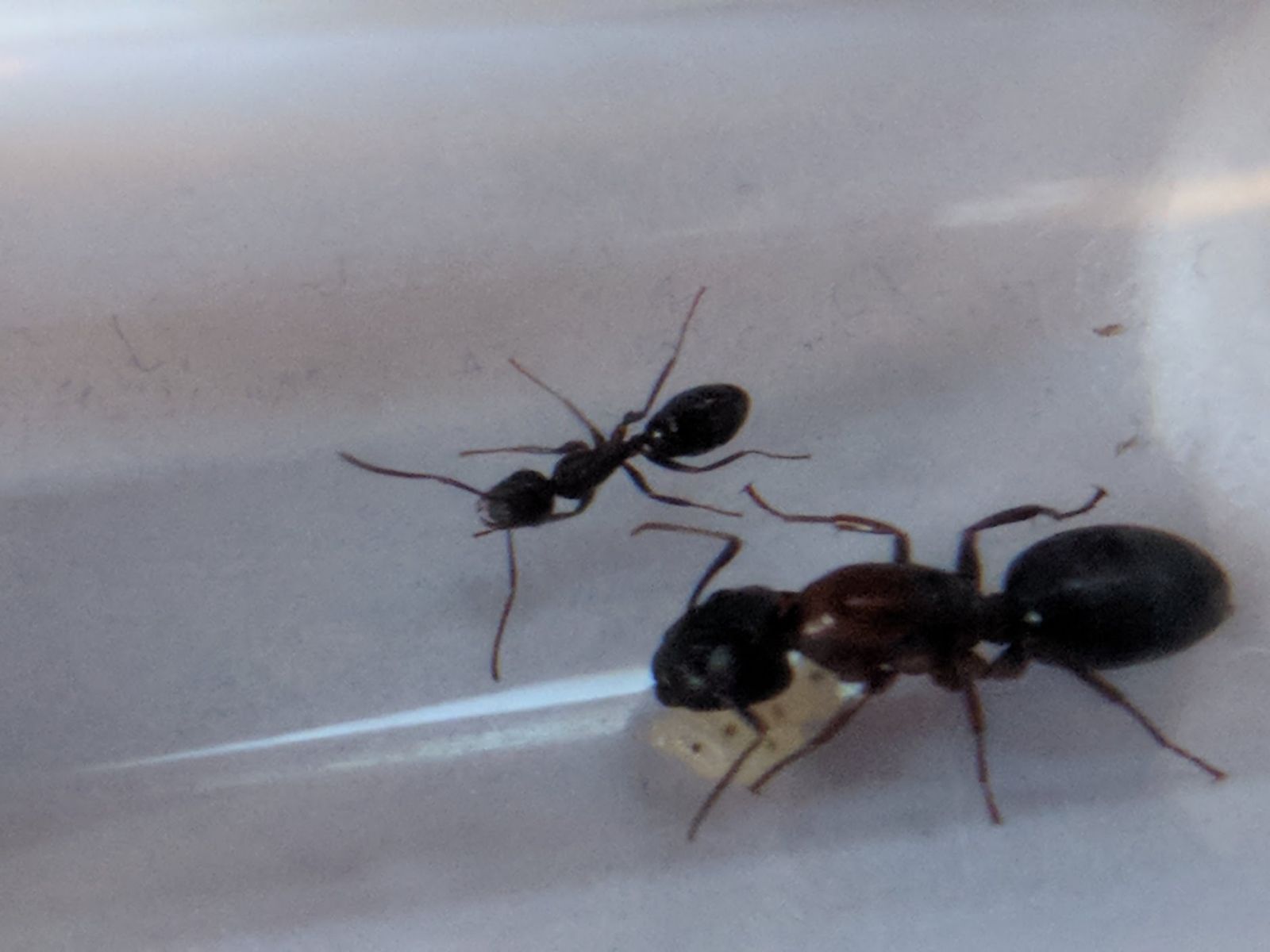
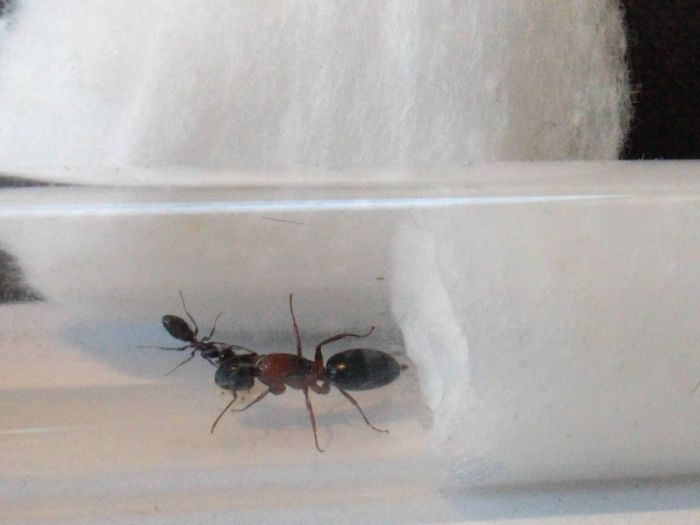
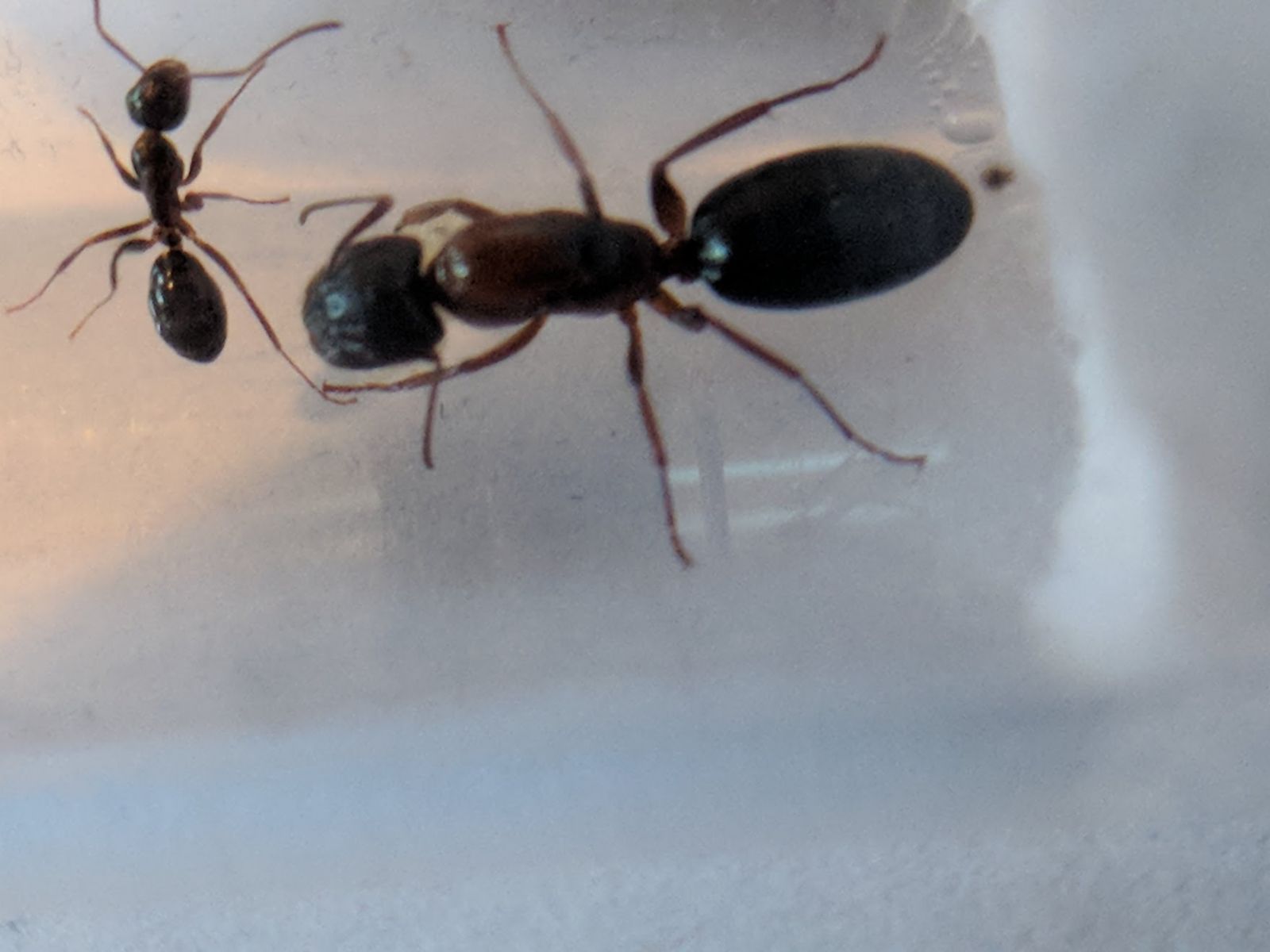
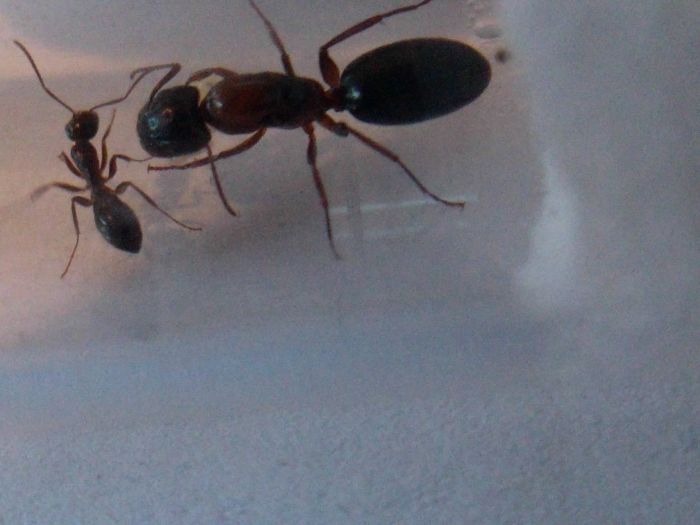
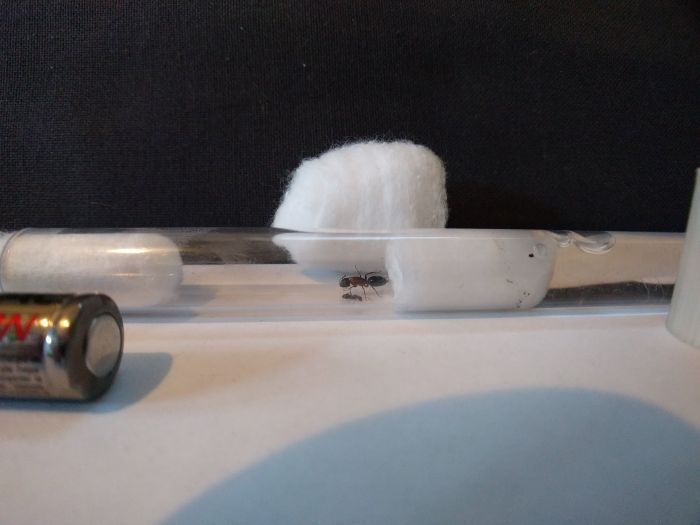
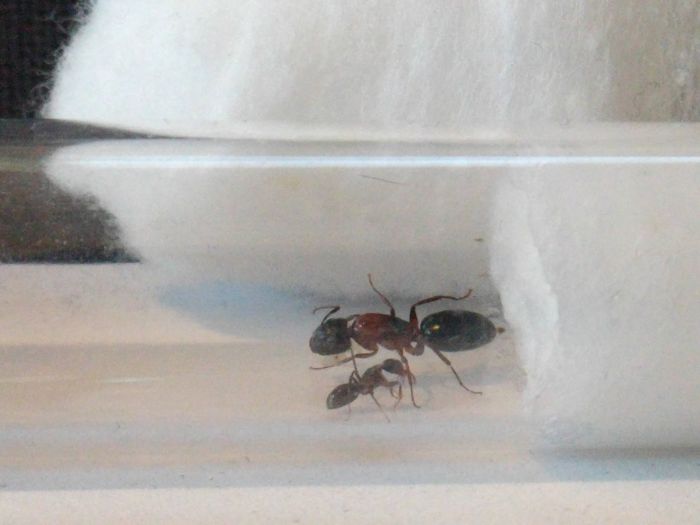
Edited by Mettcollsuss, February 9 2018 - 8:03 AM.


